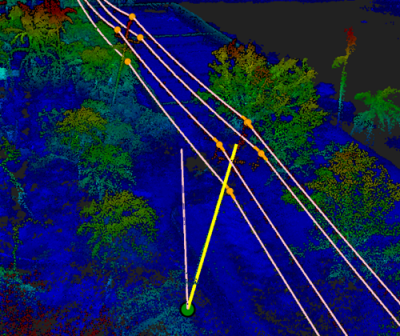The Department of Defense Small Business Innovation Research (SBIR) & Small Business Technology Transfer (STTR) Program Solicitations are really a bounty of good ideas. They may not know how to build it, but they know what they want, and it gives you a great idea for the way that the military is eyeing 3D data capture and its utility.
This week’s find is a solicitation for “a system to track pilot head, hand, and arm positions and movements in a rotorcraft cockpit using advanced human-machine interface technology like those used in gaming systems to identify gestures, movements, and head tracking (approximate eye aim-point).” Which means – you guessed it – the Army wants to put a Kinect in a helicopter cockpit.
Why?
On an aircraft its potential applications include both cockpit and passenger cabin, with the main area of interest being the cockpit. The ability to track a pilot’s head to determine what he is looking at is one of the main tasks. This can be used to estimate current object of interest, help identify when a pilot is becoming overly focused on a single display or control (cognitive tunneling), and identify areas/locations of interest to the pilot, for example, when reacting to threats.
They Kinect could also help the pilot control the actual helicopter, obviously, in the same way that a Kinect can allow a video gamer to control a helicopter on a TV screen, with gestures and repetitive motions. That might be a little dicey, though, as I’m guessing a helicopter pilot would like a fair bit of precision in the controls he/she uses and my experience with the Kinect is that the motion-as-control interface can be a little mushy and frustrating from time to time.
It’s awesome to see the military being so open-minded, really, with its ideas for utilizing whatever technology is available to make its soldiers safer and more effective in their jobs. Basically, Phase III of this project couldn’t make more sense:
This system would have key applications to both commercial and military cockpits with greatest impact on those systems that do not have head tracking capabilities like the Blackhawk, Kiowa Warrior, and Chinook. Besides being applicable to aircraft cockpits, this system would also have application to almost all ground vehicles, C2 Vehicles, even fixed workstations: any work station where an operator is interacting with displays and control. Commercial application for such a ruggedized system are nearly endless and would include: monitoring vehicles and facilities for home land security and industry at large; a variety of automotive, trucking, commercial airline, etc. for monitoring operator status; and support aiding systems, and monitoring safety in shops, hangers, construction sites, etc.
Obviously, this doesn’t just make sense for helicopters. It could make sense for any application where constant attention is vital. Just assume for a few minutes that the TSA is actually trying to do an important job (no, seriously). You know that guy who has to sit in a chair checking to make sure people don’t come in through the out door (and yes, that was a Led Zeppelin reference)? Well, wouldn’t it be helpful if there was an automatic alarm generated when his/her head was staring at the floor for an inordinate amount of time because he/she decided to take a little nap?
Yes, there are video analytic applications for this kind of thing, but it may be that a Kinect-style device is cheaper and, because it’s gathering data in 3D, more effective than video applications. Hard to know, but it’s certainly worth a swing.





